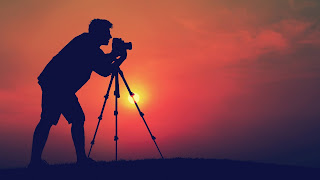Yvette Heiser Talks About Landscape photography
Landscape photography is one of
the most appreciated stripes of photography. As we explore and travel, it's
easy to come skewered by beautiful geography. By learning to snap it
effectively, we can turn a memorable experience into a piece of fine art. While
geography photography is generally joined with nature photography, can also be considered geography in numerous circumstances.
Use a Good Camera
The ideal cameras you can use for shooting geographies — and lots of them — are DSLR and mirror less cameras. Here an expert photographer Yvette Heiser says that while the moment's most developed smartphone cameras are suitable to produce enough nice geography shots, they've yet to catch up to the quality of professional cameras.Here are some tips given as follows:
Also read :Yvette Heiser talks about Presentation of artwork in Photography
Equip Yourself with a Good Lens
Brace your camera with a compatible lens that's
optimized for shooting geographies. You'll need a wide-angle lens, which offers
a wider perspective and thus captures further of the scene. Wide-angle lenses
have lower focal length figures (35 mm and below). But avaricious geography
shooters generally go shorter than 24 mm (ultra-wide angle lens).
It's also veritably important to keep your lenses
clean. A dirty front element can dock the life of important lens coatings and
negatively impact your images.
Invest in a Good Tripod
Further Yvette Heiser says numerous geography shutterbugs shoot handheld thinking
that their images look sharp enough, only to be disappointed once the lower
details are magnified. Thus, one of the most important pieces of outfit that
you'll need for geography photography is a tripod. They help minimize camera
shake so you do not end up with vague shots, particularly when using slower
shutter pets. A tripod will allow you to work with a low ISO to avoid noise in
darker settings.
Another thing you'll need to flashback is that you
won't always get to prop it up on flat shells when you're shooting outside.
You'll find that occasionally, you'll have to set it up on jewels or soft lawn,
so look for a tripod with rounded bases and rubber overshoes.
. Learn About the Basics of Homemade Exposure
With your DSLR or mirror less camera on Manual Mode,
familiarize yourself with the exposure triangle shutter, orifice, and ISO. Each
is measured by a numerical value and affects the quantum of light that enters
the lens.
They are the introductory descriptions for each
• Shutter Speed Determines how fast or decelerate the
shutter closes to end the image prisoner after clicking the shutter button.
• The theoretical value expressed as an f-number or full stops to determine the size of the lens iris opening, regulating the quantum of light that enters the lens and affecting the depth of field.,the right combination will help you get the right exposure for an image. So whether you're shooting shots during the day or hoping to get spectacular night shots of the mega city, you'll eventually be suitable to get the right settings once you understand how these three work and affect each other.
. Find Good Lighting
Thanks to your homemade camera, you have further
freedom to shoot under different lighting conditions. Nevertheless, the sun
will be your main light source, so you'll need to record your shoot when the
light isn't too harsh as subtle, diffused lighting helps reveal the true tones
of colors and make your prints look more natural.
Also read : Creative Photography Tips For Summertime By Yvette Heiser
Play with Pollutants
There are two kinds of camera lens pollutants that geography shutterbugs generally use to ameliorate their images. One is the polarizing sludge, which manages reflections, suppresses light, and darkens skies to a deep blue to make the shadows pop. The other is the neutral viscosity sludge, which filters out a certain quantum of light from entering the lens to allow the use of slower shutter pets, wider orifices, and/ or advanced ISO situations without overusing the image.
Produce a Meaningful Composition
The stylish professional geography photography tip that
you'll ever get is to pay attention to your image composition. The same
introductory image can change drastically when mugged from slightly different
edge points. Thankfully, there are many compositional ways and rules that you
can follow to ensure that you get an image that will pique the interest of your
observers and convey your asked communication.
Some of the most common ways include simplification,
figuring out the right image exposure for your scene, the observance of the
Rule of Thirds, the use of leading lines, and incorporating balance in your
images. Once you get used to them, your prints will be noticeably better and
further witching
.
Make Sure Your Focus is on Point
Part of composing your shot is icing accurate focus on
your main subject. In utmost cases, this means making your subject method sharp
and leaving the rest of your frame sufficiently blurred out so your subject is
stressed.




Comments
Post a Comment